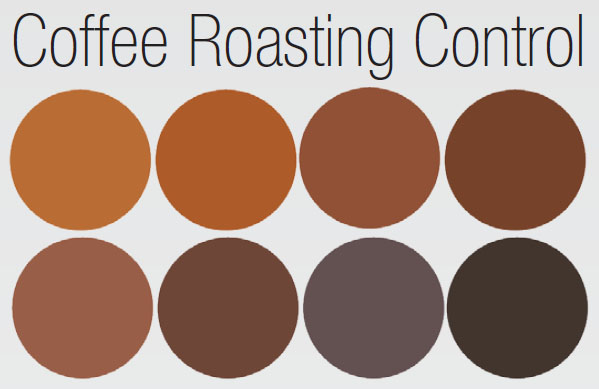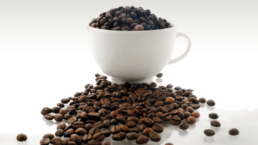How Do You Measure Coffee Bean Color?
Light, medium, dark roasted, and black are common responses to the question, “How do you like your coffee?” This is because color is one of the elements indicative of coffee flavor, making it crucial for the color of coffee roasts to be on par with consumer expectations. Successful coffee manufacturers utilize a strict color evaluation process, similar to the one outlined in our Food Whitepaper. The process is implemented to efficiently control the color and flavor of these beans throughout the roasting process using a color meter with a custom index installed to identify industry standard roast levels.
Roasting with Flying Colors
Considered an art form, roasting transforms the flavor of beans by changing their color and density through heat, and is a practice that must be carefully monitored. There are four noted color categories of roasts, including light, medium, medium/dark, and dark, ranging from a mild taste (lighter roasts) to a distinct bitterness (darker roasts).
The difference between roast categories can be minimal, so roasters often use a color classification system called the Agtron scale as a guide to define each roast’s color level.

For complete color control and accurate measurements, a color measurement instrument is also used to determine the roast level. Konica Minolta Sensing’s CR-410C portable colorimeter, for example, quantifies the color of coffee using advanced optical technology. These measurements provide valuable information for roasters, such as the Specialty Coffee Association of America (SCAA) roasting number, roast level, and pass/fail assessment to determine if the product meets the color standard. This allows coffee producers to separate production batches by roast levels, identify color discrepancies, and maintain the flavor profile associated with each roast color.
Several coffee companies use the CR-410C Colorimeter in their factories to maintain the quality of their products. After the roasting process, their coffee beans are ground into powder and evaluated for taste and color through human visual assessment. The color of the coffee powder is then measured with the CR-410C using an accessory attachment designed specifically for granules. While it is possible to measure the beans themselves, it is not recommended since the internal roasting of the beans can then not be evaluated. These measurements identify any color inconsistencies in the powder, as well as differences in coffee color quality.
By evaluating the color of coffee throughout the production and roasting processes, these companies successfully determine their product’s roast level, as well as, better determine their taste, to be either packaged for retail stores or shipped to coffee shops. With each response to the question, “How do you like your coffee?” it can be assured that the flavor profile will match the coffee’s color for consumer satisfaction.
Did you know?
- Coffee beans are seeds inside of red cherries that are grown on trees. These cherries are stripped down to green (coffee) beans and then roasted to different shades of brown.
- Some regions produce green coffee beans with a blue shade to them. When roasted, these blue-green beans yield a rich flavor.
- Legend has it that the Ethiopian shepherd, Kaldi, first noticed the effects of caffeine circa 800 A.D. when he noticed his goats becoming energetic and starting to “dance” after eating red coffee cherries off shrubs.










